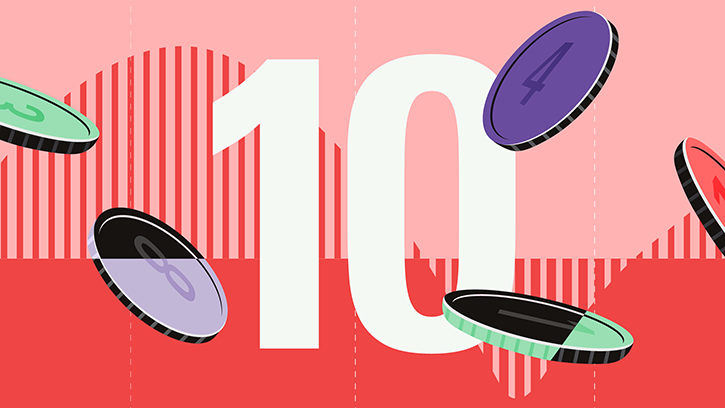
In May WisdomTree Cybersecurity UCITS ETF USD Acc (WCBR) topped the list of best performing exchange traded products with a 20% gain.
This theme has come back strongly after recent cyber attacks against big companies and public institutions, making cyber security an obligatory expense for firms and governments. A cyber attack on the US military base in Guam has driven the point home. And in the UK, hackers have stolen personal information from the BBC, British Airways and Boots, and demanded ransoms from these organisations.
Despite the poor performance seen in the first quarter of the year, the cyber security industry still has high growth prospects. The European Union plans to spend €1 billion to build five “security operations centres” that will be able to intervene in the event of an attack. More broadly, the fundamentals of the cyber security sector are solid: according to data collected by Morningstar analysts, corporate spending on cybersecurity services for 2022 and for the first quarter of 2023 showed no signs of slowing.
Semiconductors were the other winning theme in May, with Lyxor MSCI Semiconductors ESG Filtered UCITS ETF Acc (SEMG) gaining 19.9%. The benchmark includes large and mid-cap securities across 23 developed markets and eight emerging markets.
The most important name within the portfolio is Nvidia (NVDA), the current investor darling, and its performance drove the index last month. Nvidia's stock rebounded 44% in May, surpassing a $1 trillion market capitalisation, the first semiconductor firm to do so. Morningstar analysts think the shares are now overvalued and we’ve looked at alternatives on more modest valuations.
Five ETFs exposed in different ways to industrial metals as rhodium, zinc, nickel and copper, were among the worst performers in May.
Rhodium is (along with iridium) the rarest non-radioactive metal on Earth, and its value is closely linked to the automotive industry. Production is being affected by political and industrial dysfunction in South Africa, where 83% of the world's output is concentrated. Rhodium is used in catalytic converters for petrol and diesel cars, aircrafts and nuclear reactors.
(To give an idea of how volatile this sector is, an ETF that tracks rhodium was the best performer in April with a 24% gain.)
Indeed, the iShares MSCI South Africa UCITS ETF USD (IRSA) lost 12.8% in May, as offshore investors’ sentiment soured over factors including a heightened power crisis and US allegations – denied by South Africa – that it supplied weapons to Russia last year.
Meanwhile, the fall in natural gas prices on the US market Henry Hub continued in May. The market is seeing a surplus in storage, with inventories 33% above 2022 levels and 20% higher than the five-year average. Mild spring weather, low gas demand, pipeline maintenance, and a drop in exports of liquefied natural gas have driven spot prices of natural gas to negative territory.
Monthly top and flop performers often coincide with very volatile and risky products, which should play a satellite role in your portfolio. For this reason we also include an overview of the biggest European-domiciled ETPs in terms of assets, which could be more appropriate to consider among core holdings. Performance in May 2023 range from +1.8% for the Invesco S&P 500 ETF (SPXS), down to the iShares Core FTSE 100 UCITS ETF GBP (ISF),which lost 5%.
Methodology
According to Morningstar data, there are about 44 percentage points between the best and worst performing Exchange-traded products (ETPs) in May, with returns for the month ranging from 20.2% to -23.3%.
We have looked at the key trends in the fourth month of the year, excluding inverse and leveraged funds. These instruments, being purely passive products, reflect the evolution of the markets without the bias (good or bad) of an active manager. My colleague Johanna Englundh has looked at this issue in depth in her article A World Without Passive Funds?.



























